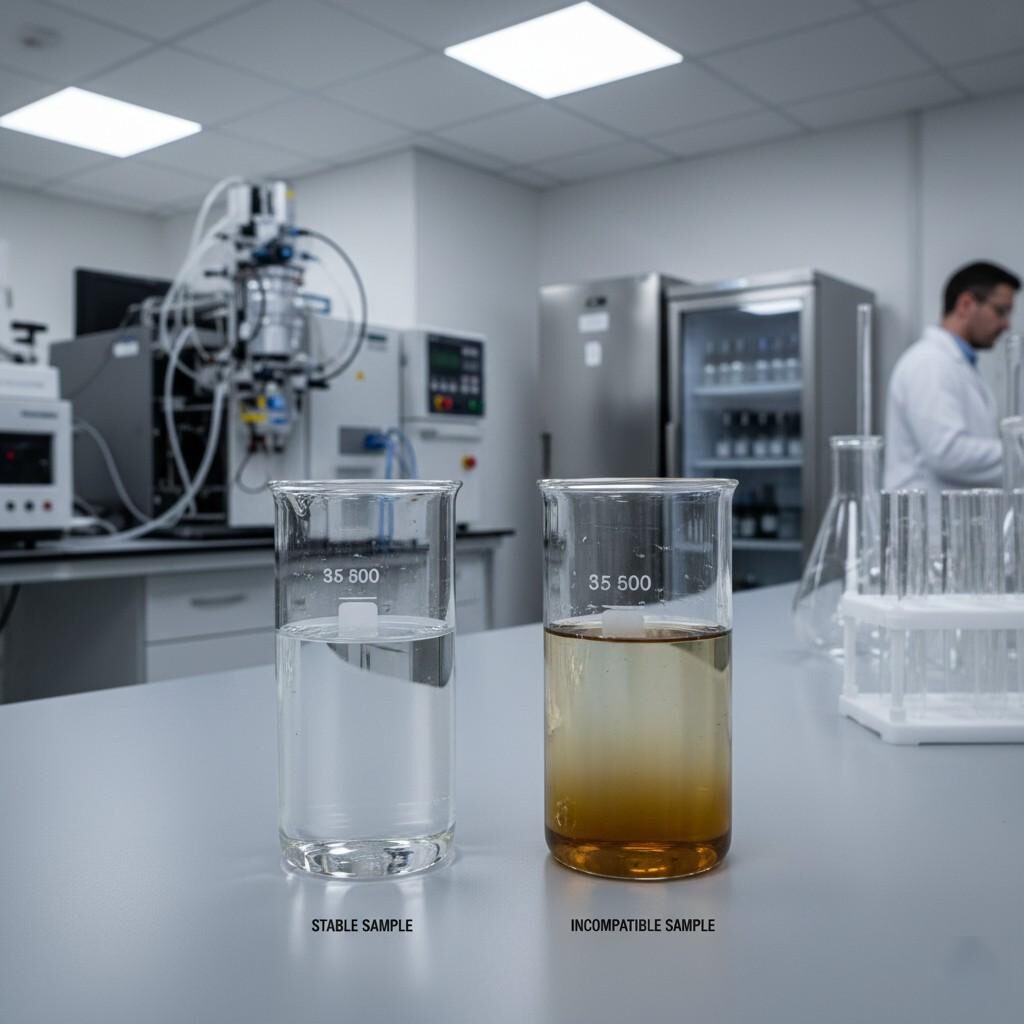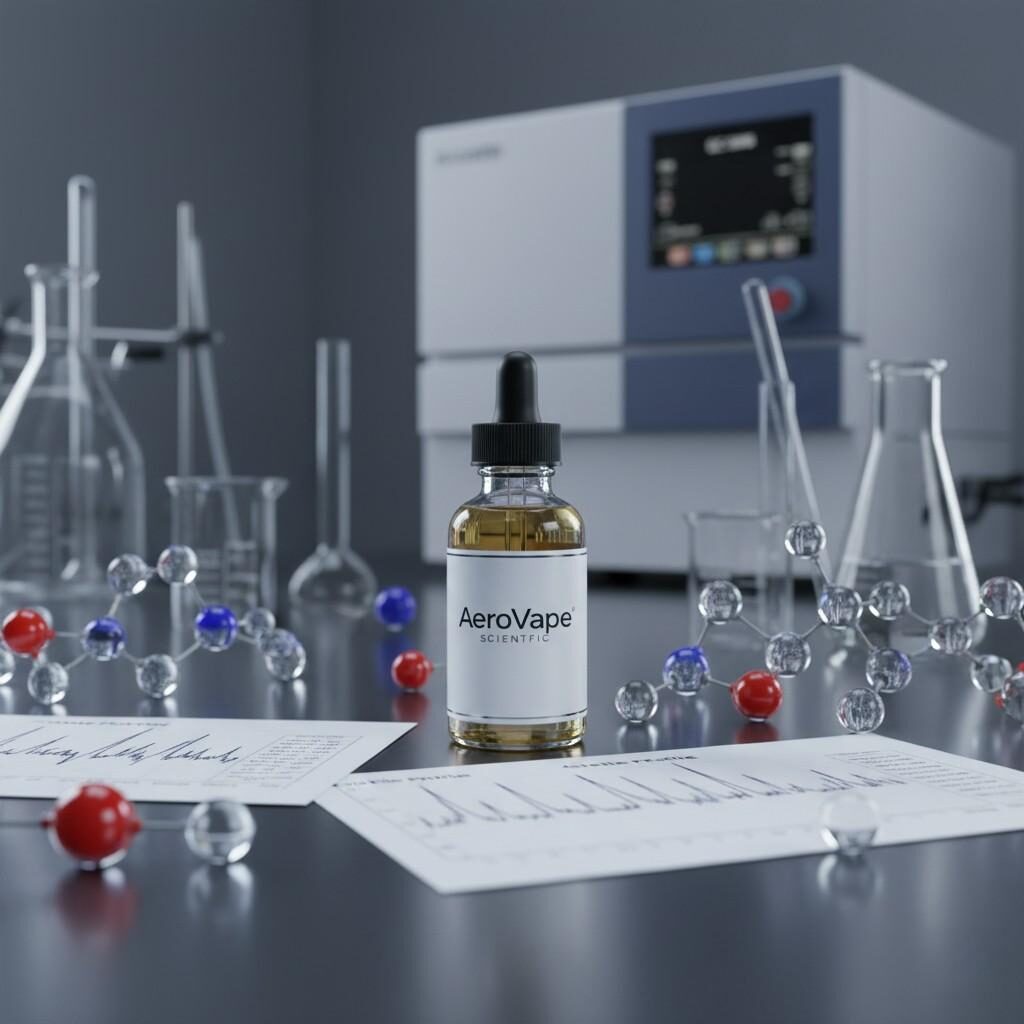Author: R&D Team, CUIGUAI Flavoring
Published by: Guangdong Unique Flavor Co., Ltd.
Last Updated: Nov 19, 2025

Aroma Molecules in E-Liquid R&D
In the global e-liquid industry, flavor quality is everything. No matter how advanced the device design is or how sophisticated the branding appears, a poor flavor experience leads to instant consumer rejection. As competition among manufacturers intensifies, brands push for increasingly complex profiles—multi-layered fruits, desserts, beverages, tobaccos, botanicals, and hybrids.
However, behind the artistry of flavor formulation lies a critical yet often overlooked issue:
These hidden conflicts between aroma molecules, solvents, sweeteners, acids, cooling agents, or stabilizers can silently destroy a product’s quality long before it reaches the consumer. Incompatibilities can cause:
Manufacturers frequently blame “raw material issues,” “batch inconsistency,” or “supplier quality,” but in many cases, the real root cause is ingredient incompatibility—a predictable, avoidable phenomenon grounded in chemistry and molecular interaction.
This comprehensive technical article explores the science behind these incompatibilities, provides case studies, and outlines actionable methods to prevent failures. It is designed to offer practical guidance for R&D chemists, QC teams, manufacturing engineers, and brand owners who want to build durable, stable, and compliant flavor profiles for e-liquids.
Flavor ingredient incompatibility refers to chemical or functional conflicts that occur when two or more components react negatively with each other, causing undesirable changes in aroma, stability, safety, or performance.
These interactions are rooted in:
Many molecules used in e-liquid flavorings—such as esters, aldehydes, terpenes, and ketones—are inherently reactive. As the U.S. National Institutes of Health notes, aldehydes and ketones are “highly susceptible to nucleophilic attack and oxidation,” making them unstable in mixtures with reactive partners (NIH Reactions of Organic Compounds) .
This means even seemingly “perfect” recipes can deteriorate rapidly if incompatibilities are overlooked.
Many issues manifest during production, storage, or use:
These issues often escalate during shipping, especially through warm climates.
Modern flavor trends push complexity:
But complexity increases the chance that molecules interact negatively.
In addition, supply chains are global: ingredients from different suppliers may have varying purity levels, optical isomer content, solvents, or stabilizers—each of which can cause unpredictable incompatibilities.

E-Liquid Stability Comparison
Ester top-notes (e.g., ethyl butyrate, ethyl acetate) react readily with aldehydes (e.g., vanillin, benzaldehyde, cinnamaldehyde). The reaction mechanism often results in:
Wikipedia’s entry on Aldehyde Reactions notes that aldehydes undergo rapid nucleophilic addition and oxidation in reactive environments, making mixtures with esters potentially unstable .
This is why:
Incompatibility symptoms include flavor “washing out” after 2–4 weeks.
Terpenes (limonene, pinene, terpinolene) used in citrus, mint, and botanical flavors are highly prone to oxidation. The European Food Safety Authority (EFSA) notes that terpenes oxidize into epoxides and peroxides—potential irritants if not controlled (EFSA Guidance on Flavourings) .
When terpenes oxidize:
Incompatibilities arise when terpenes are mixed with:
WS-23, WS-3, and menthol are extremely sensitive to acidic environments. Combining them with:
Often results in:
Cooling agents should always be paired with neutral pH systems to preserve effect.
Creamy flavors rely on diketones, lactones, or complex esters. These compounds destabilize quickly in the presence of acids. Reactions include:
In e-liquids, this often appears as:
Chemistry textbooks from university-level organic chemistry (e.g., Purdue University’s online O-chem resources) describe how acids catalyze ester hydrolysis, breaking flavor compounds into alcohols and acids, which dramatically shift sensory profiles .
Sucralose, ethyl maltol, maltol, and stevia analogs can degrade in the presence of:
Reactions include:
This is one of the reasons sweet profiles often darken during shipping to warm regions.
Some heavy aroma molecules have poor solubility in:
Symptoms of incompatibility include:
These issues worsen as the formula becomes more complex.
Most product failures happen after leaving the factory, especially when:
Even a perfectly formulated flavor becomes unstable if ingredient incompatibilities accelerate under heat.
Regulatory tests (e.g., PMTA, TPD) look for:
If ingredient incompatibility causes accelerated degradation, GC–MS and LC–MS results become inconsistent, leading to possible rejection.
Common consumer feedback linked to incompatibility includes:
Brands can lose thousands of customers due to these preventable issues.

GC-MS Flavor Degradation Analysis
A popular “strawberry ice cream” flavor failed within 4 weeks:
Reformulation required splitting the strawberry base into two esters and stabilizing the cream component with a buffering system.
A lemon-mint blend became harsh and metallic:
Switching to stable citrus substitutes and pH-neutral cooling agents solved the issue.
Symptoms:
Cause:
Cold-chain shipping and a sucralose alternative eliminated the problem.
Tobacco flavors include:
Incompatibility with acidic sweeteners caused rapid oxidation, turning a smooth tobacco into a bitter, burnt, acrid product.
Rebalancing pH and removing reactive terpenes restored stability.
Use GC–MS to test:
By analyzing molecular behavior before mixing, R&D teams can avoid reactive combinations.
Categorize ingredients:
| Ingredient Type | Compatible With | Incompatible With |
| Esters | Creams (neutral) | Aldehydes, acids |
| Aldehydes | Bakery, tobacco | Mint, unstable esters |
| Terpenes | Floral, herbal | Oxidizers, acids |
| Sweeteners | Fruits | Aldehydes, high heat |
| Cooling agents | Neutral flavors | Acidic flavors |
This matrix should be refined with internal lab results.
Many incompatibilities originate from acidic environments. Using food-grade buffering agents can prevent:
Even slight pH adjustments stabilize the formula dramatically.
Simulate real-world shipping:
Any incompatibility will show up quickly during stress simulation.
As covered in industry guidelines, temperature control dramatically slows reaction rates. Cold chain is essential to prevent:
Cold-chain handling drastically reduces incompatibility symptoms.
Use:
Small molecular substitutions can transform formula stability.
Your flavor becomes:
This directly impacts brand reputation, regulatory approval, and global expansion.

Premium E-Liquid: Scientific Formulation
Most e-liquid failures are not caused by bad raw materials—they are caused by hidden molecular incompatibilities. By understanding the chemistry behind these interactions and implementing scientific preventive methods, manufacturers can create:
Solving compatibility issues is not optional. It is a core component of professional flavor manufacturing.
We specialize in high-stability, export-grade flavorings designed to minimize ingredient incompatibility risks for premium e-liquids.
For technical exchange or free samples, contact us anytime:
📧 Email: [info@cuiguai.com]
🌐 Website: [www.cuiguai.com]
📱 WhatsApp: [+86 189 2926 7983]
☎ Phone: [+86 0769 8838 0789]
We provide advanced support for:
Let’s help you build safer, more stable, and more competitive e-liquid flavors.
The business scope includes licensed projects: food additive production. General projects: sales of food additives; manufacturing of daily chemical products; sales of daily chemical products; technical services, technology development, technical consultation, technology exchange, technology transfer, and technology promotion; biological feed research and development; industrial enzyme preparation research and development; cosmetics wholesale; domestic trading agency; sales of sanitary products and disposable medical supplies; retail of kitchenware, sanitary ware and daily sundries; sales of daily necessities; food sales (only sales of pre-packaged food).
Copyright ©Guangdong Unique Flavor Co., Ltd.All Rights Reserved. Privacy Policy